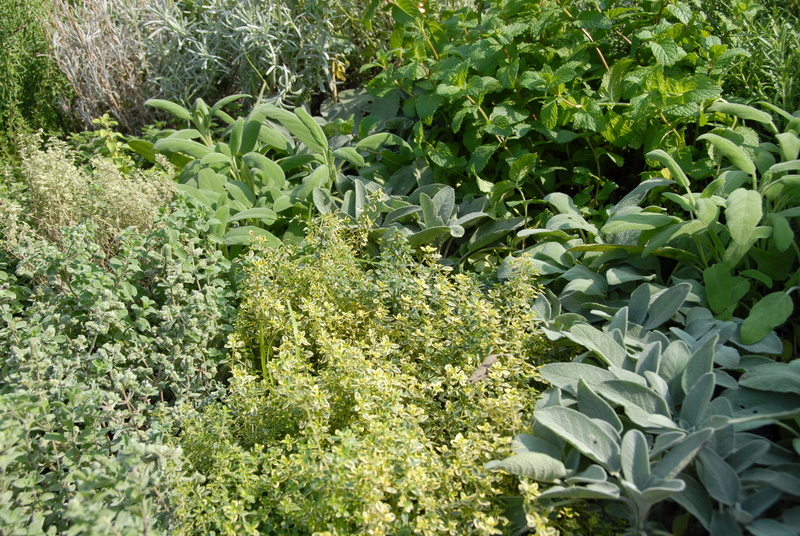Starting the Journey: How to Begin a Herb Garden
Posted on 27/06/2025
Starting the Journey: How to Begin a Herb Garden
Embarking on the rewarding adventure of cultivating your own herb garden is a decision that brings both flavor and fragrance to your life. Whether you dream of effortlessly plucking fresh basil for homemade pesto, soothing chamomile for tea, or aromatic lavender for sachets, this comprehensive guide on how to begin a herb garden will equip you with all the knowledge you need. Let's explore the practical steps, valuable tips, and expert advice to help your herb gardening journey thrive from seed to harvest.
Why Start a Herb Garden?
Herb gardening is more than a hobby--it's a lifestyle enhancement with far-reaching benefits:
- Fresh Flavors: Culinary herbs enliven dishes with vibrant, homegrown taste.
- Cost Savings: Enjoy abundant herbs at a fraction of supermarket prices.
- Health Benefits: Many herbs offer medicinal properties and are packed with nutrients.
- Eco-Friendly: Growing herbs reduces packaging waste and your carbon footprint.
- Therapeutic: Gardening is a relaxing, rewarding, and mindful experience.

Choosing the Right Herbs for Beginners
When it comes to starting a herb garden, selecting the right herbs sets you up for success. Consider these beginner-friendly options that are easy to grow, hardy, and incredibly useful:
- Basil - A sun-loving annual, perfect for Mediterranean cuisine.
- Mint - Vigorous and robust; ideal for teas and desserts.
- Parsley - Flat or curly leaf, both grow well in partial sunlight.
- Chives - Versatile, pest-resistant, and cold-hardy.
- Cilantro - Fast-growing, popular in Mexican and Asian recipes.
- Thyme - A perennial favorite for roasts and stews.
- Oregano - Staple for Italian, Greek, and Mexican food.
- Rosemary - Fragrant, woody, and drought-tolerant.
Tip: Start with 3-5 herbs to avoid overwhelm and ensure proper care as you learn.
Deciding Where to Plant: Indoors or Outdoors?
Determining the best location is a crucial step in beginning your herb garden. Each option offers distinct benefits:
Indoor Herb Gardens
- Convenience: Access fresh herbs in your kitchen year-round.
- Controlled Environment: Better management of pests and temperature.
- Suitable Containers: Small pots, window boxes or vertical planters.
Important: Place indoor herbs near a sunny window (south-facing is ideal) and supplement with grow lights if needed.
Outdoor Herb Gardens
- Space to Grow: Larger area for expansive herb varieties and companion planting.
- Natural Light: Sun exposure (minimum 6 hours daily) for healthy growth.
- Options: Raised beds, traditional garden plots, or patio containers.
Note: Outdoor gardening is ideal if you have available yard space and suitable climate.
Planning Your Herb Garden: Layout and Design
Thoughtful design enhances both the beauty and productivity of your herb garden. Follow these guidelines for a flourishing start:
- Sun Exposure: Choose a site with at least 6 hours of direct sunlight daily.
- Soil Quality: Ensure well-draining soil, rich in organic matter.
- Accessibility: Locate herbs near your kitchen for regular use.
Garden Structure Ideas
- Raised Beds: Easier to manage, control soil quality, and improve drainage.
- Container Gardening: Portable and great for those with limited space or poor soil.
- Window Boxes: Ideal for urban dwellers and apartments; keep herbs within arm's reach.
- Spiral Herb Gardens: An attractive and practical design that maximizes space and water efficiency.
Gathering Your Herb Garden Supplies
Before diving in, assemble the essential tools and materials for successful herb gardening:
- Quality potting soil or garden compost
- Herb seeds or starter plants
- Containers (with drainage holes), raised beds, or garden space
- Trowel, watering can & pruners
- Plant markers for keeping track of herb varieties
- Mulch to retain moisture and suppress weeds (for outdoor beds)
Planting Your Herb Garden: Step-By-Step Guide
Here's how to begin a herb garden with confidence, whether from seeds or seedlings:
Step 1: Preparing the Soil
- Till or loosen soil in your chosen location.
- Mix in compost or well-rotted manure.
- For containers, use a high-quality, organic potting mix designed for herbs.
Step 2: Sowing Seeds or Transplanting Seedlings
- Follow seed packet instructions for depth and spacing.
- Water newly planted seeds gently.
- For seedlings, gently loosen roots before planting and water thoroughly.
Step 3: Providing Proper Care
- Keep soil moist but not soggy--most herbs dislike "wet feet."
- Fertilize sparingly; too much can reduce flavor potency.
- Pinch back growth to encourage bushy, healthy plants.
- Remove flower buds on culinary herbs like basil to prolong leaf harvest.
Caring for Your Growing Herb Garden
Watering Techniques
- Herbs generally prefer well-drained soil. Water when the top inch feels dry.
- Water in the morning to prevent fungal issues.
- Container herbs may need more frequent hydration, especially indoors.
Pest and Disease Prevention
- Encourage beneficial insects like ladybugs and lacewings.
- Use neem oil or insecticidal soap for common pests (aphids, whiteflies).
- Rotate herbs and practice good garden hygiene to minimize disease.
Pruning and Harvesting
- Regular harvesting promotes lush growth.
- Pinch leaves above leaf nodes or cut whole stems for use.
- Never remove more than one-third of the plant at a time.
Popular Methods to Start Your Herb Garden
There are multiple approaches to start an herb garden--choose the one that best fits your space, lifestyle, and gardening experience:
Seed Starting
- Seeds offer a wider selection of herb varieties.
- Cost-effective and rewarding but require patience and beginner's attention.
- Begin indoors 6-8 weeks before your region's last frost date (for outdoor gardens).
Transplants and Starter Plants
- Great for instant gratification and less risk of failure.
- Available year-round at nurseries, garden centers, and even supermarkets.
- Perfect for new gardeners eager for a quick start.
Herb Garden Kits
- Pre-packaged with soil, seeds, and containers--ideal for beginners and gifts.
- Popular for windowsill herb gardens and classroom projects.
Creative Ideas to Enhance and Personalize Your Herb Garden
Starting your herb garden is just the beginning! Personalize your green space and make it your own with these fun ideas:
- Label Your Herbs: Use homemade plant markers, painted stones, or repurposed spoons.
- Vertical Gardens: Hang planters or use wall-mounted pockets for space-saving beauty.
- Combine with Flowers: Add edible blooms like nasturtium or calendula for color and culinary use.
- Incorporate Art: Terracotta pots, mosaic tiles, or garden sculptures make your herb garden inviting.
Common Mistakes to Avoid When Starting a Herb Garden
Avoiding pitfalls helps ensure your herb garden thrives. Here are classic mistakes and how to sidestep them:
- Overwatering: Herbs prefer slightly dry conditions; always check soil moisture first.
- Poor Lighting: Lack of sunlight leads to spindly growth and weak flavor.
- Crowding: Give herbs ample space for air circulation and healthy roots.
- Neglecting Pruning: Regular pinching encourages bushiness and longer life.
- Wrong Herbs Together: Some herbs, like mint, are invasive--plant them in isolated pots.

Harvesting and Using Your Fresh Herbs
Keen to enjoy the fruits of your labor? Here's how to get the best from your herb garden:
- Harvest in the morning when essential oils are most concentrated for peak flavor.
- Use sharp, clean scissors to avoid bruising leaves.
- Preserve excess herbs by air drying, freezing in ice cube trays with oil/water, or making herb-infused butters.
- Experiment with pesto, herbal teas, flavored oils, or home remedies.
Final Thoughts: Your Herb Gardening Adventure Awaits
Learning how to begin a herb garden is not only an introduction to gardening, but a transformative journey into self-sufficiency, wellness, and creativity. With these essential steps and mindful care, your patch of green will thrive--filling your kitchen with the aroma and flavor of fresh, homegrown herbs all year round.
Ready to start your herb gardening journey? Let these guidelines inspire your next steps and remember: every great garden begins with a single seed. Happy planting!

